Mersing’s tourism is booming, but it is now straining Johor’s hidden paradise
Sign up now: Get insights on the biggest stories in Malaysia
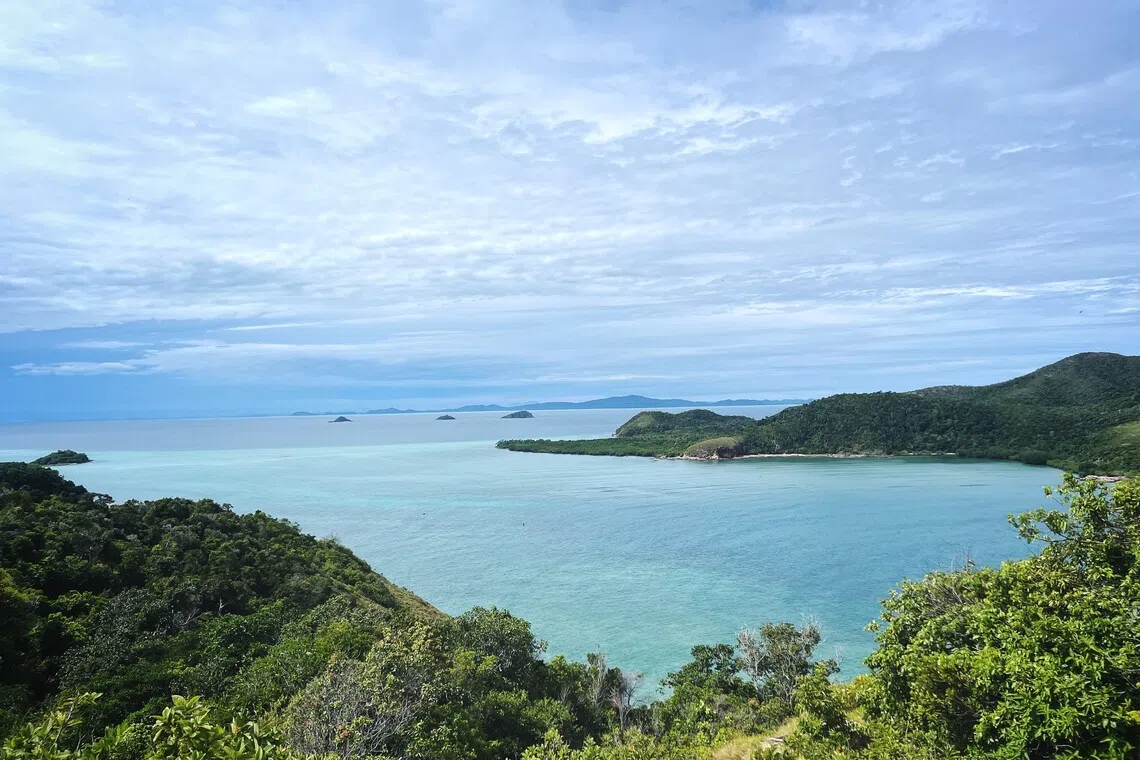
The view of Mersing waters from Pulau Seri Buat, an island off the coast of Pahang.
ST PHOTO: HARITH MUSTAFFA
Follow topic:
- Mersing tourism boomed post-lockdown, gaining the nickname "Malaysia's Maldives" and has attracted over 360,000 tourists by August 2025.
- Increased tourism is stressing coral reefs, with coral cover declining from nearly 60 per cent to 50 per cent in Reef Check Malaysia's 2024 survey.
- Six islands are closed for marine rehabilitation, causing income loss for locals like boat assistants, prompting calls for sustainable tourism.
AI generated
MERSING, Johor – After a 20-minute dash from the mouth of the Mersing River, two speedboats carrying 18 passengers glided past a chain of small islands, before docking at an uninhabited hilly island where a narrow trail leads up the hill.
Those who tackled the steep climb at Pulau Seri Buat were rewarded with a panoramic vista of hilly islands, sandbanks, and distant coral reefs painted in three shades of blue.
“It is hard to believe this is Malaysia,” said cafe manager Shamiel Saiful Baharin, 28, who was among the first to reach the peak.
He was part of a group that had travelled 12 hours by road from Selangor for a weekend work retreat, paying RM180 (S$56) per head to snorkel and go island-hopping.
These day-trippers are part of a new tourism wave transforming Mersing. Once a sleepy gateway to the popular Tioman Island, the Johor coastal district is now the destination itself. The district boasts 97 islands and rocky islets, and those who travel for island-hopping trips either visit Mersing as a single-day trip or stay in hotels and chalets on the mainland.
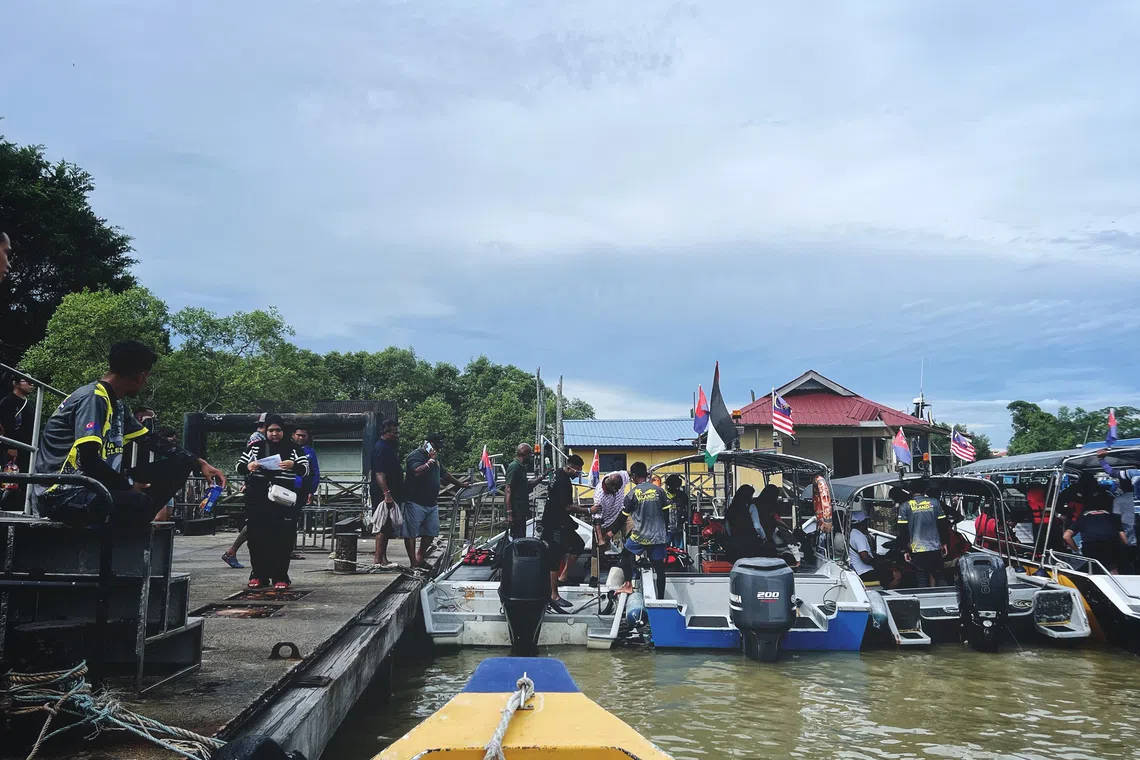
Tourists boarding speedboats at the Mersing jetty on Oct 22 for island-hopping tours.
ST PHOTO: HARITH MUSTAFFA
In 2023, local media Bernama reported, citing a local tourism association member, that Mersing welcomed 700,000 visitors that year. Mersing district officer Jamil Hasni Abdullah said that by August 2025, over 360,000 tourists had already been recorded for the year. Looking ahead, the Johor state is targeting two million annual visitors by 2030.
But the success story of Mersing has come at a cost. Conservationists are warning that the coral reefs, which are attracting visitors and reeling in tourist receipts, are showing signs of distress.
The allure of Mersing islands
Mersing was pushed into the spotlight after the Covid-19 lockdown, as the Malaysian government implemented tax breaks to boost domestic tourism. Videos of crystal-clear waters, coral gardens and sun-bleached sandbanks went viral, earning the coast the nickname “Malaysia’s Maldives”.
Although corals in the area showed signs of recovery during the pandemic, non-governmental marine conservation organisation Reef Check Malaysia reported that this progress has been undone in just two to three years.
Data from the organisation’s 2024 survey revealed that coral cover now stands at a marginally healthy 50 per cent. This marks a decline from the post-pandemic level, which was closer to 60 per cent.
“Most of it can be attributed to the bleaching event in 2024, but some of it is a broader trend that reflects a range of issues, including tourism pressures, coastal development, pollution,” its chief executive Julian Hyde told The Straits Times.
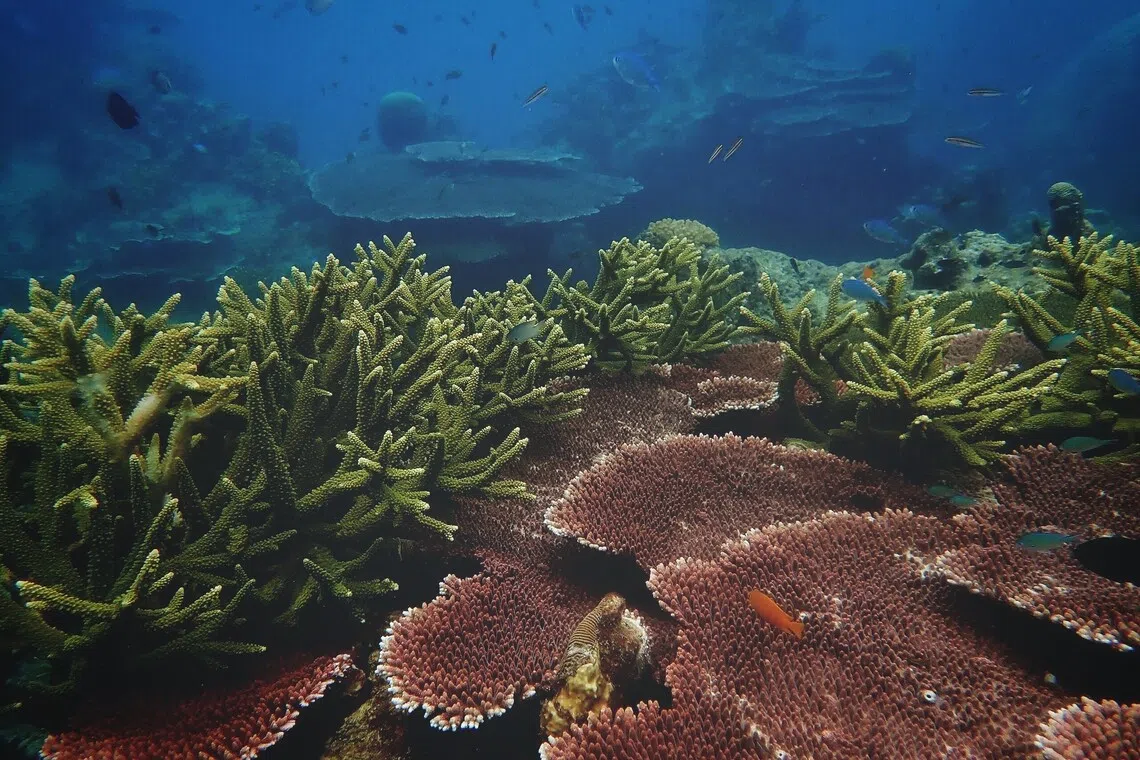
Coral reef in Pulau Aur, an island located 75km from Mersing.
PHOTO: REEF CHECK MALAYSIA
On Sept 18, 2025, the Mersing District Office ordered the closure of six islands in the area to make way for marine rehabilitation.
This was followed by a Facebook post by Johor’s Sultan Ibrahim Iskandar on Sept 21 calling for the protection of the area’s marine biodiversity, with photos showing dozens of boats anchored near the reefs.
Mr Jamil said Mersing has 47 islands and 50 rocky islets with a population of 78,195, according to a 2020 census.
Among these, the islands that are closed off for conservation work are Pulau Harimau, Pulau Mensirip, Pulau Gual, Pulau Mertang Timur, Pulau Mertang Barat and Pulau Mertang Tengah. The first two are popular destinations for water-based activities.
Environmental strains
Officials have urged the public to remain calm about the closure, explaining that it is a routine measure for coral rehabilitation. However, for those in the tourism industry, this has meant immediate pay cuts and fewer tour opportunities – further compounded by the approaching monsoon season.
Boat assistants like Mr Mohd Najib Abdul Jalik, 41, now earn between RM100 and RM120 a day instead of RM160, as shorter routes mean lower mileage pay.
“Now that it is near the end of the year, we will be grounded until February doing boat maintenance when the monsoon hits – no trips, no income,” he said.
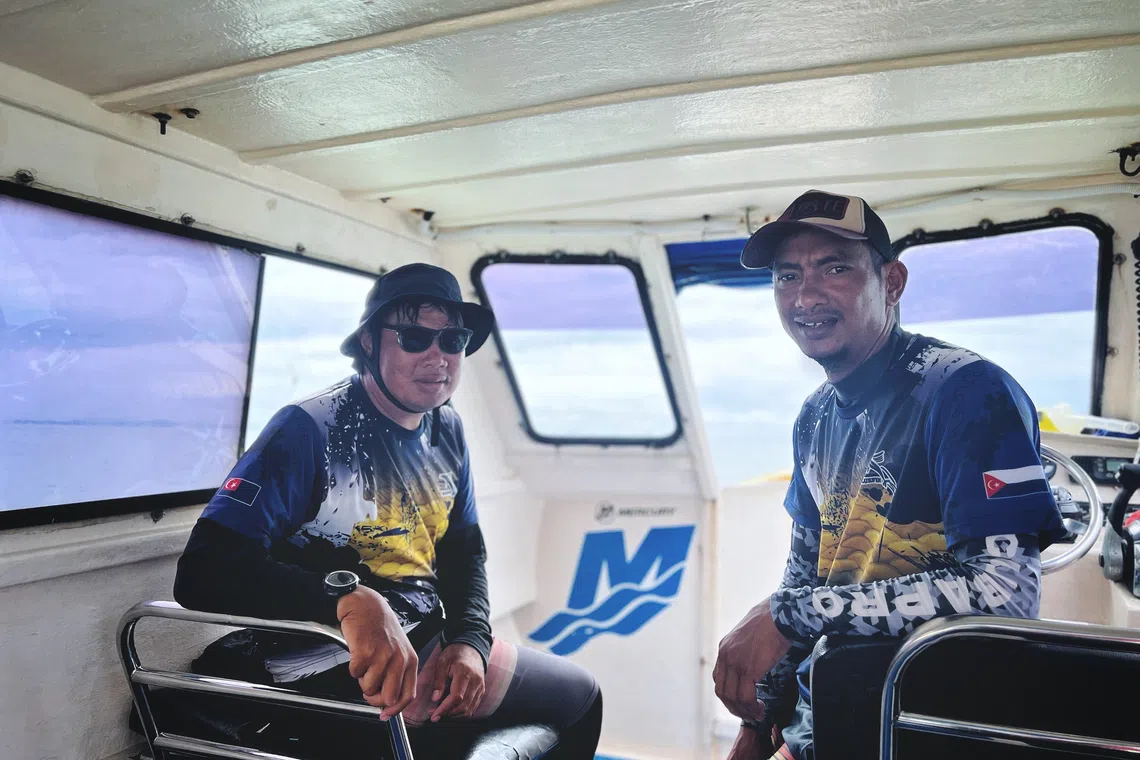
Boat assistant Mohd Najib Abdul Jalil (left) and boatman Norhayat A Bakar suffered pay cuts when the islands were closed.
ST PHOTO: HARITH MUSTAFFA
Ms Nur Nadirah Zainudin, 28, of tour operator Bluefin Daytrip Mersing, said: “Business is still okay, but we had to adjust our packages.”
One of those packages, priced between RM100 and RM130 and including a visit to the now-closed Pulau Harimau, had to be replaced with a visit to Pulau Seri Buat, an island under the jurisdiction of the neighbouring state of Pahang.
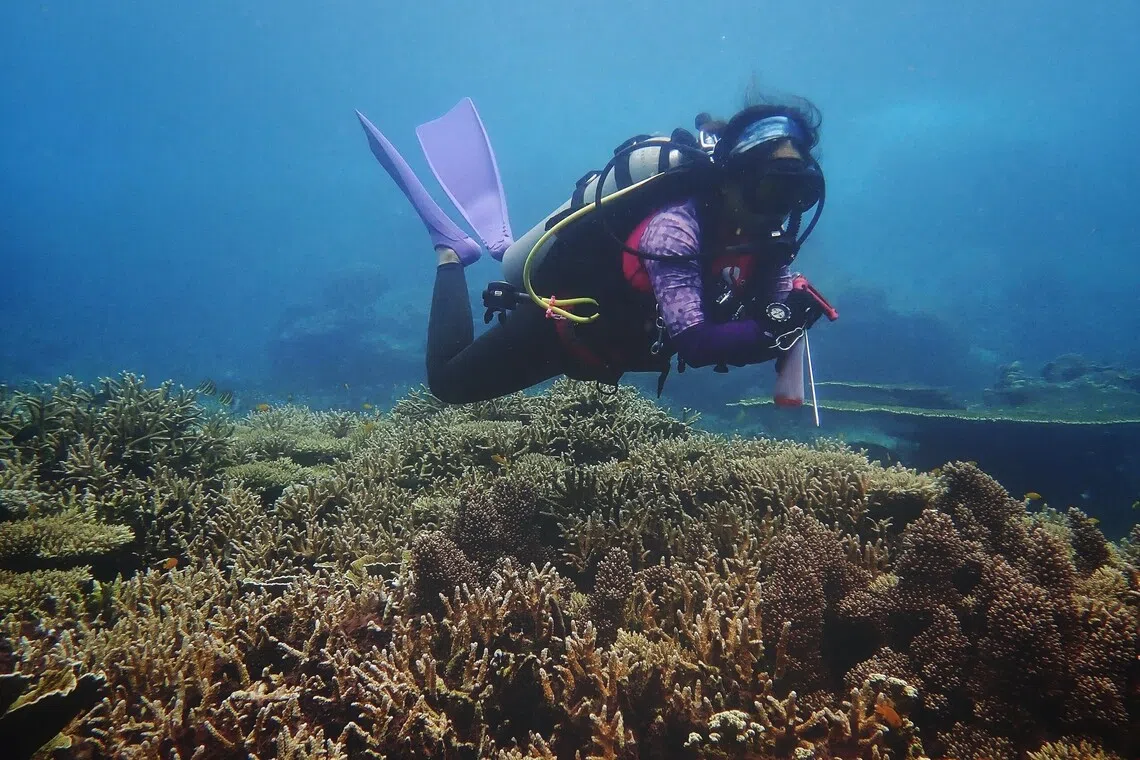
A marine conservationist from Reef Check Malaysia examining corals in Pulau Aur, on the team's last dive before the monsoon in late October.
PHOTO: REEF CHECK MALAYSIA
Mr Mohd Farez Akmal, who runs tour operator mySeahunter Empire, said operators were previously forced to head to Pulau Harimau due to the long closure of other islands. Now, even Pulau Harimau is out of bounds.
“This overcrowding issue usually never happens,” said the 45-year-old, who has been in the Mersing tour business for 10 years.
When contacted, Mr Jamil told ST that there are now 355 registered boat operators in Mersing, up from 200 in 2023 and 280 in 2024. According to him, the surge was due to more businesses setting up to “seize the tourism opportunity”.
Interest has grown further in connection with the state’s Visit Johor 2026 initiative, as foreign press and influencers are being invited to promote its offerings ahead of the upcoming year.
In the light of recent developments in its tourism sector, the Mersing District Council launched a digital monitoring system called the Mersing Tourism Operating System (Metos) in 2024, which tracks visitor data based on the activities they participate in there.
Council officers say Metos helps monitor tourism patterns. However, it stops short of imposing visitor quotas, reportedly due to concerns about upsetting tour operators. As a result, the islands are vulnerable to excessive use.
Propping up local livelihoods
Mersing’s under-development and isolation limit local employment work opportunities. Connected to Johor Bahru by a narrow, winding trunk road that cuts through dense plantations and jungle – requiring a 90-minute drive – the district has few economic alternatives.
This is why day-trip tourism has become crucial for locals on both the mainland and outer islands, said Mersing Tourism Association secretary Ahmad Firdaus Shaik Omar.
“There are only two industries here: tourism and fishing. Tourism here lasts only eight months a year, from March to October, due to the monsoon.
“So, when there is a shock to the industry, such as the closure of the islands, it hits us hard,” said Mr Firdaus.
Before this, tourism was mainly concentrated in private island resorts. Now, even villagers benefit by selling drinks and souvenirs, and renting boats, he explained.
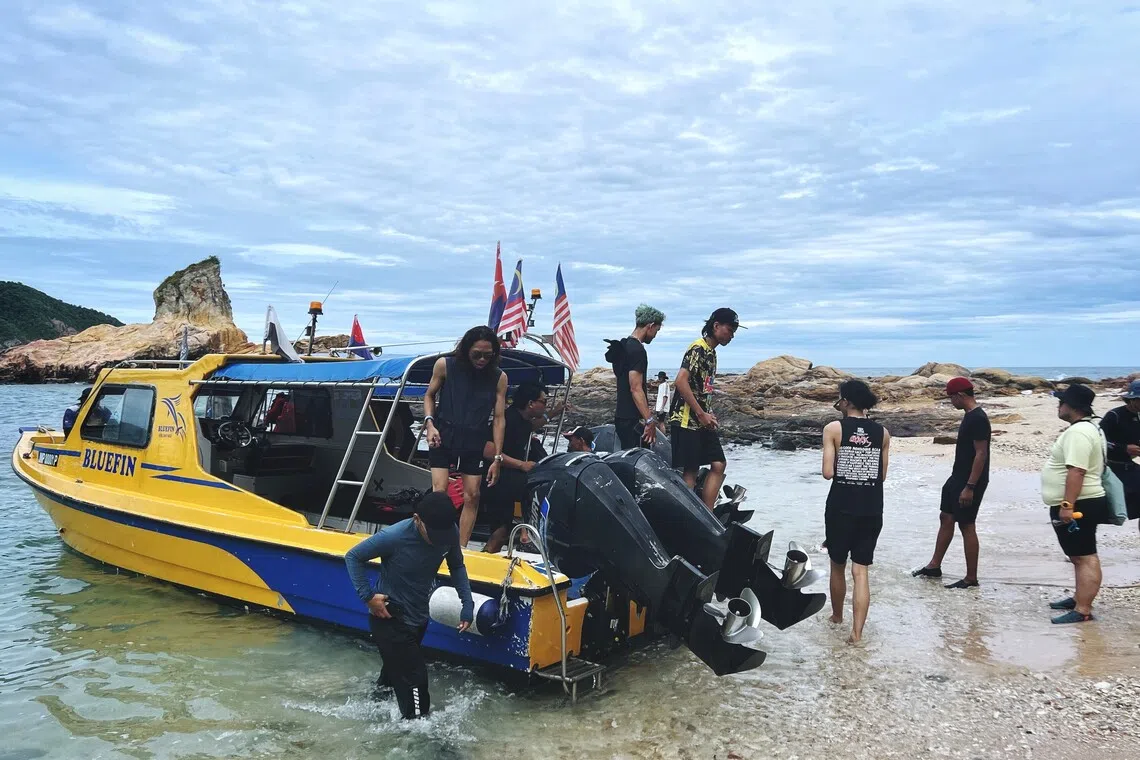
Tourists disembarking from a speedboat at Pulau Seri Buat, an island about 30km off the coast of Mersing, under Pahang territory.
ST PHOTO: HARITH MUSTAFFA
On Pulau Besar, formerly known as Pulau Babi Besar (Malay for “Big Boar Island”), only 184 residents were recorded during the latest census.
Madam Normah Abd Rahim, 54, said most of the younger generation, including her children, had left the island for work in other states. Now, only several families – most of them relatives – and resort caretakers inhabit the island.
However, her coconut drink and snack sales have risen 30 per cent since the boom in island-hopping trips.
“If there were no day trips, this island would be deserted,” she said.
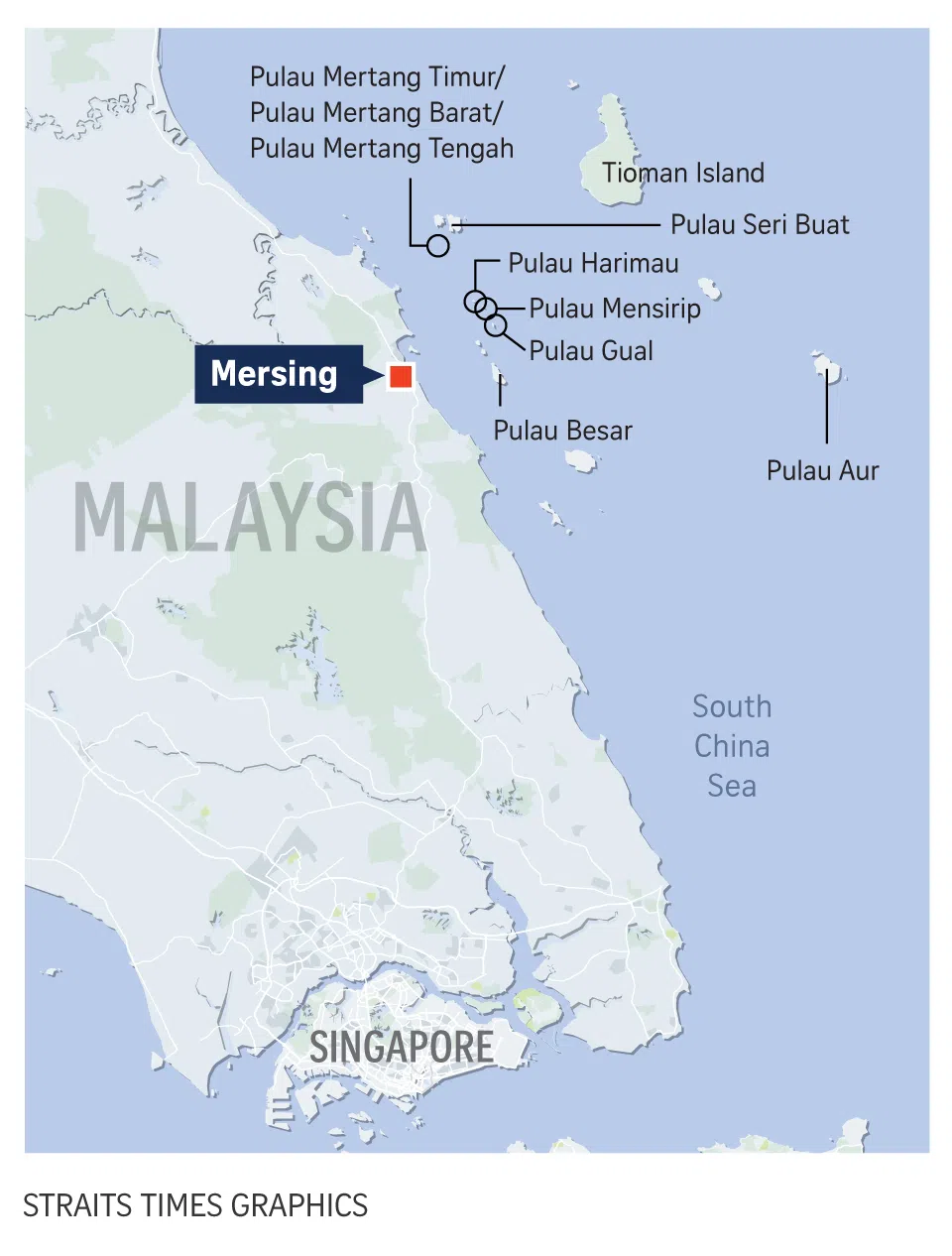
Conservationists said the dwindling young population in mainland Mersing and its island communities poses another challenge, despite tourist controls. This is because this demographic, which is most suited for work as conservation stewards, volunteers and tour guides, is finding work elsewhere.
“It is not easy to find young locals to lead conservation projects nowadays,” said Mr Atteleth Don Peris, programme manager for Reef Check Malaysia, who leads coral health surveys.
Mr Hyde added: “We are not anti-tourism at all. You need tourism to sustain livelihoods.
“But it is important to convince communities that they need to protect ecosystems for those livelihoods to be sustainable.”
As evening winds blow westwards from the South China Sea, speedboats carrying tired snorkellers head back to the mainland. They traverse increasingly choppy waters as the high tide before sunset deepens the waterway, easing the docking of boats at the Mersing River.
Mr Najib, steering through a sudden downpour with the aid of Google Maps, shared with ST the delicate reliance on tourism as a livelihood. Without tourism, he might be forced to turn to a less lucrative source of income.
“If there was no tourism here, the next job I would probably have is sitting with fishermen all day making keropok,” he said.
Correction note: In an earlier version of the story, we misspelt the name of Mr Norhayat A Bakar in a caption. This has been corrected. We are sorry for the error.
Sign up for our weekly
Asian Insider Malaysia Edition
newsletter to make sense of the big stories in Malaysia.


